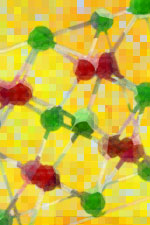New Paper - "Thermophysical properties and oxygen transport in the (Uₓ,Pu₁₋ₓ)O₂ lattice"
Our latest paper is now available from the Journal of Nuclear Materials:
- M.W.D.Cooper, S.T. Murphy, M.J.D. Rushton and R.W. Grimes, “Thermophysical properties and oxygen transport in the (Ux,Pu1-x)O2 lattice”, Journal of Nuclear Materials, 461 206–214 (2015) http://dx.doi.org/10.1016/j.jnucmat.2015.03.024
In this paper we build upon a recent body of work using a many-body potential approach (see potentials page) to investigate the thermophysical and diffusion properties of actinide oxides. Using an updated version of the PuO2 parameter set we have studied the thermal expansion, specific heat capacity, oxygen diffusion and the oxygen point defect energies of (Ux,Pu1−x)O2. The results shows that the non-uniform cation lattice has a much smaller effect on the oxygen diffusion in (Ux,Pu1-x)O2 compared to (Ux,Th1-x)O2. This is expained in terms of the lattice parameter missmatch between the end member oxides and the role this plays in the defect energies.


